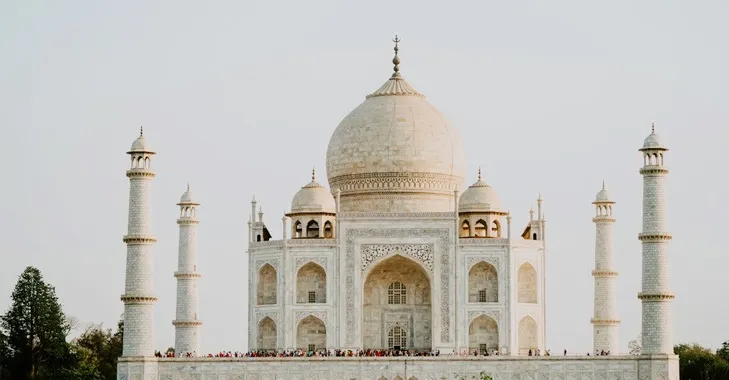Embarking on the Jaipur Agra Delhi tour package isn’t just a journey through India’s Golden Triangle—it’s an invitation to witness and capture the soul of India through your lens. From royal palaces and ancient forts to bustling streets and serene monuments, this tour is a visual feast for photography lovers. Here are the must-capture photography spots that will elevate your travel album and Instagram feed to new heights.
1. Hawa Mahal, Jaipur – The Palace of Winds
One of the most iconic landmarks in Jaipur, Hawa Mahal is a must-capture gem. This honeycomb-like five-story palace, built with red and pink sandstone, features 953 small windows known as “jharokhas.” The best time to photograph the Hawa Mahal is during sunrise when the early morning light adds a soft golden hue to its façade. Don’t forget to head to the cafés across the street for a perfect straight-on view.
2. Amber Fort, Jaipur – A Majestic Marvel
Nestled on a hilltop overlooking Maota Lake, Amber Fort is a visual masterpiece. With its intricate mirror work, grand courtyards, and massive gates, the fort offers countless photography opportunities. Capture panoramic shots from the top, or frame the elephants as they climb the stone pathway. Sunset at Amber Fort casts a golden glow, ideal for wide-angle and silhouette shots.
3. City Palace, Jaipur – Regal Elegance
Still a royal residence, the City Palace blends Rajasthani and Mughal architecture beautifully. The Peacock Gate and the inner courtyards are especially photogenic. The vibrant colors, ornate doors, and intricate patterns make for Instagram-worthy photos. Bring your wide-angle lens to truly capture the palace’s grandeur.
4. Taj Mahal, Agra – The Epitome of Love
No Jaipur Agra Delhi tour package is complete without the most photographed monument in India—the Taj Mahal. This UNESCO World Heritage site is best captured at sunrise when the soft light creates a dreamy atmosphere. Walk around the gardens to find unique angles, or photograph its reflection from the Mehtab Bagh across the Yamuna River. Whether you’re a pro or an amateur, the Taj never fails to impress.
5. Agra Fort – Mughal Grandeur in Stone
Often overshadowed by the Taj, Agra Fort is a historic red sandstone fort filled with architectural wonders. The delicate carvings, grand halls, and sweeping views of the Taj from inside the fort offer multiple shooting opportunities. The contrasting colors and dramatic light make it ideal for both landscape and detail shots.
6. Fatehpur Sikri – A Deserted City of Beauty
Located between Agra and Jaipur, Fatehpur Sikri is a UNESCO site filled with stunning Mughal architecture. The Buland Darwaza, Jama Masjid, and Panch Mahal are all structures that deserve your camera’s attention. The red sandstone and symmetrical designs offer perfect subjects for artistic compositions.
7. Humayun’s Tomb, Delhi – A Mughal Masterpiece
This stunning tomb served as an architectural inspiration for the Taj Mahal. With its symmetrical gardens, red sandstone and white marble, Humayun’s Tomb is best photographed in the early morning or late afternoon. The long walkways and water channels help frame the monument beautifully.
8. India Gate & Rajpath, Delhi – A Patriotic Scene
India Gate, a war memorial, stands tall amidst the chaos of New Delhi. Photograph it at dusk when it’s illuminated, and capture the symmetry of Rajpath leading toward Rashtrapati Bhavan. The wide roads, fountains, and bustling energy create a contrast between calm monumentality and urban life.
9. Qutub Minar – Reaching for the Sky
The Qutub Minar complex is rich in historical charm and detailed stonework. This towering structure, built in the 12th century, is surrounded by ruined mosques and intricately carved pillars—ideal for moody, atmospheric photos. Try vertical panoramic shots to capture the full height of this magnificent minaret.
10. Lotus Temple – Modern Spiritual Architecture
This Bahá’í House of Worship is shaped like a lotus flower and surrounded by gardens and reflection pools. The pure white marble structure looks particularly striking against a clear blue sky. Use wide-angle and symmetry-focused shots to best capture its clean, geometric beauty.
Tips for the Perfect Photography Experience:
- Golden Hours: Shoot early in the morning or late afternoon for the best natural light.
- Local Portraits: Capture the vibrant local culture—vendors, traditional attire, street performers.
- Equipment: Bring a DSLR or mirrorless camera with a wide-angle lens and a zoom lens for flexibility.
- Drone Shots: If permitted, drone photography can offer a unique aerial perspective of forts and palaces.
- Respect Local Customs: Always ask for permission before photographing people, especially in religious or rural areas.
Final Thoughts
The golden triangle private tour offers a stunning visual narrative of India’s rich past and vibrant present. From majestic forts and romantic mausoleums to bustling markets and tranquil temples, every location tells a unique story. For photographers, both amateur and professional, this journey is not just about sightseeing—it’s about preserving moments of history, culture, and beauty through your lens.
So pack your camera, charge your batteries, and get ready to capture the magic of India’s Golden Triangle in every frame.
